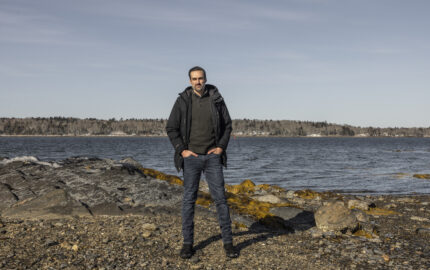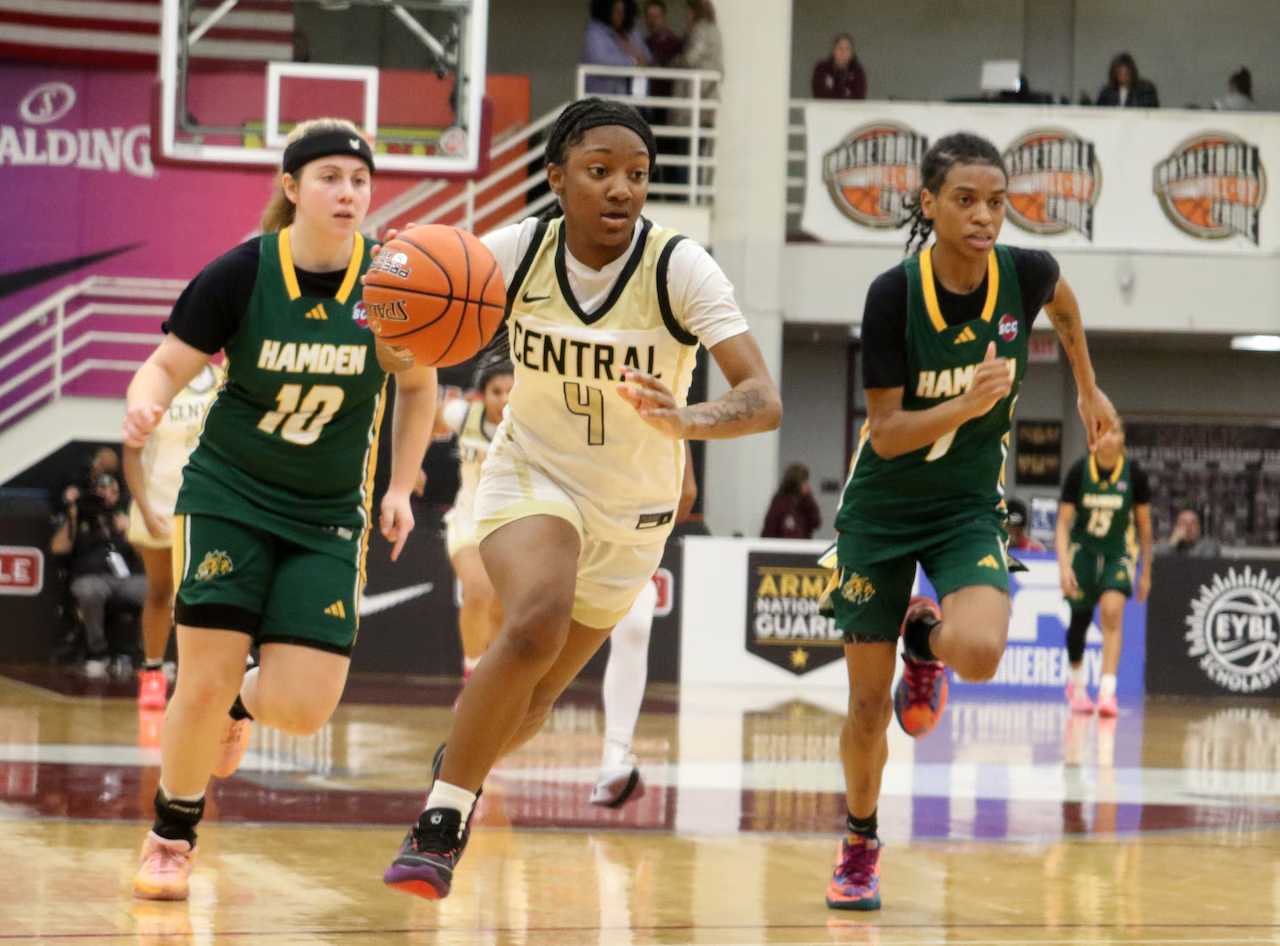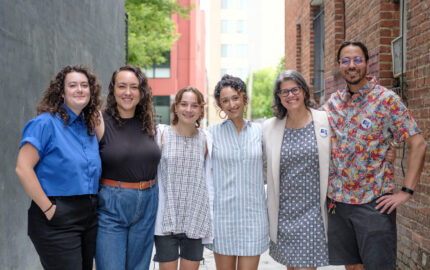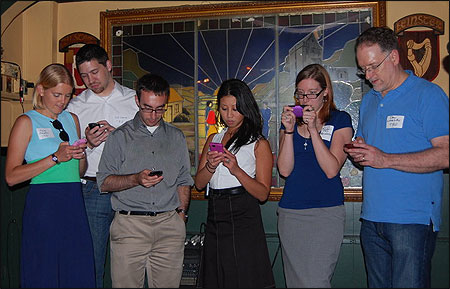
TBD’s community engagement team, from left, includes social media producer Mandy Jenkins, senior community host Jeff Sonderman, community hosts Daniel Victor, Nathasha Lim, and Lisa Rowan; and Steve Buttry, director of community engagement.
Editor's note: In Feburary 2011, major changes were announced which included the layoff of most of the news staff and a repositioning of the site. The job of engaging with those formerly known as “the audience” is in some ways becoming a new online “beat”—one in search of a simple moniker to describe what it is, the skills required, and the tasks entailed. Four of the six members of TBD’s community engagement team describe what they do at this local news site that came to life in the summer of 2010.
Nathasha Lim:
“I’m a community host at TBD.” That’s what I say when people ask what I do. Hearing this, they smile, sort of, and nod their heads, and then they ask again what it is I really do. By now, this routine is all too familiar—but I can appreciate why. Until I started this job, I hadn’t heard of a community host either. Unlike the previous positions I’ve held—reporter, producer, video journalist—this one was unfamiliar, with responsibilities undefined and always evolving.
While I don’t have a clear definition for my title, in the short time I’ve been doing it, one thing is certain: What I do is unpredictable and diverse. On any given day I will keep an eye on local bloggers and interact with the community via social media. I stay on top of local news by relying on a combination of traditional and new sources. Then I use social media and digital tools to bring accurate and useful news and information to the public—quickly.
I’m also responsible for maintaining the food and dining section of our website. Every day I compile a comprehensive roundup of food, dining and restaurant news in our metropolitan area. To do this I scour a wide range of local news sources, community and food blogs, and social media sites. Those who blog about food and dining often play the role of restaurant reviewers, and they also break news about neighborhood eateries. The news they publish—along with their commentary—is what I use to fill my restaurant blog every day.
So, in a way, food is the topic that focuses my beat. As a community host, I have a daily challenge to figure out how to keep TBD’s food, dining and restaurant content fresh, relevant and satisfying for readers, which we do with original reporting. A separate though related challenge is coming up with stories that are not already being covered by one of the nearly 200 blogs that have joined our site’s Community Network.
Our bloggers provide great information, but the topics they cover don’t limit my selection of stories for original reporting. In fact, their stories, tweets and Facebook updates more often than not provide a foothold for TBD as we do a more in-depth story or approach a topic from a different angle. Or what I read on a blog might spur an idea for a different piece altogether.
Being a community host is about engaging bloggers in daily dialogue. But it’s also about figuring out how to take what’s out there on the blogs—and in the news—and create content for our site with which our readers will want to engage.
Lisa Rowan:
When I get the inevitable “what do you do?” question, I smile (while groaning inside) and reply, “I work at a TV station.” It’s easier that way. Only the truly curious follow up, and then I explain that I work “on a new local news website that works alongside a local ABC affiliate.” Yet when news breaks, my job description doesn’t matter. TBD isn’t stuck on titles anyway so when something out of the ordinary happens, the newsroom’s collective blood pressure rises, mine along with it.
In early September, the tweets came in: There was a hostage situation at the Discovery Communications Building in Silver Spring, Maryland. Reporters from TBD and our sister station WJLA-ABC7 rushed to the scene. I was fresh off a three-year stint as a media researcher in a very calm office so my first task was easy: hyperventilate. It wasn’t like being at a newspaper and reporting the story and publishing it in the next day’s edition. We streamed WJLA’s live helicopter coverage. We tweeted updates. We added to our ongoing reverse-chronological story on TBD.com. Eventually, I took a breath.
When that crisis was over, a few followers observed that it was on this day that TBD—not even a month old at the time—joined the D.C.-area news scene.
There was no way we could have done what we did without our social media tools and our community networks. From across the Web, we culled tips and found photographs taken by eyewitnesses. Several who posted photos on Twitter were part of our blog network. Our reporters and photographers provided essential information, but we supplemented their coverage by reaching out to our audience.
When the deadline is “now or, scratch that, five minutes ago” the job of getting facts in order and stories accurately told before hitting the “save” button is stressful. Of course, the details of a breaking news story change; for us, new information arrived not only via police scanner updates or from our reporters but also from other people who were there, some of whom had camera phones. Such tips aren’t always correct. So our job is to do what we can to verify information coming to us from our news desk, and then take a step back and evaluate the information coming from our community of bloggers and followers of our website.
Though each TBD community host is assigned a niche topic or beat, in reality, at moments like this all of us end up swimming together with reporters, our users, and viewers. That’s when our other “beat”—the one that’s about being the host connecting to our community—kicks in.
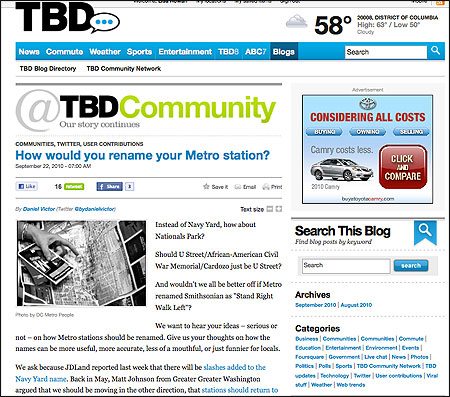
TBD, a local news site in Washington, D.C., combines information curated from other sources—including social media—with reporting.
Jeff Sonderman:
When I let people know that I have a new job at an online journalism start-up, they will often ask, “So are you a reporter?” My answer is no, but yes.
As an online news community host, my job involves reporting—but in a different sense than my previous jobs as a newspaper editor and reporter. My job is to find and filter information from sources. I don’t interview people, but I am reading what they say as I comb blogs and search social networks. Or I read comments they’ve left on a story or questions they’ve raised. Or I read a tip someone sends in.
From there, part of my job becomes helping to aggregate and geocode news from the many local blogs and news sites in the TBD Community Network. At the same time, I am listening to and responding to users. We are always trying to come up with new ways for users to interact with each other and with us. Sometimes we write, but when we do it’s usually to share information that’s been contributed by users. Or I might give an update about what’s happening at TBD.
When I come to work each day, I can expect to do a mix of reporting, reading, headline writing, search-engine optimization, community relations, customer service, blogger coaching, viral marketing, event planning, multimedia production, and Web coding. To a large extent, my newsroom assignment reflects the shift of the media environment from scarcity to an abundance of content. My challenge is to capture and funnel information from blogs, websites, and legacy media (yes, even from our competitors) that will enhance our community’s experience.
Organize it. Filter it. Present it. That’s what I do. But my job doesn’t stop there. In fact, in some ways, it’s only a beginning. Now it’s time to host the conversation that develops and invite others to join in.
Daniel Victor:
I’d been a reporter for four years before I joined TBD as a community host. Now, instead of looking for phone numbers or pounding the pavement for sources to interview, I’m scanning the Web for sources of news and information that will interest our readers. In many ways, these two jobs aren’t all that different. When I’m responding to breaking news, I’m using many of the same skills I learned as a beat reporter: You need expertise in your subject to offer context to links and recognize which ones are valuable, and you need a writer’s flair to present it as a readable narrative.
Such was the case on the day when Stephen Strasburg, the young star pitcher for the Washington Nationals, found out that he needed so-called Tommy John surgery on his arm and his recovery would last at least a year. As updates rapidly came to the Web, I gathered the most reliable and information-filled reports—relying on Twitter hashtags and pre-established lists to monitor baseball bloggers and beat writers—and then wove these into a story with chronological updates. Meanwhile, a reporter at TBD fed me updates from press conferences, and I embedded a video from an interview our affiliated TV station did with a surgeon.
I kept my eye out for information to fill the gaps in the story. I could see that people were speculating about what might have caused his injury. So when I found a blog by a pitching mechanics expert who had long ago raised red flags about Strasburg’s throwing motion, I linked our readers to it. I didn’t need to interview the expert; he had already answered the questions I had.
But when I did have additional questions for a surgeon, I called one and did an interview. “So you did actual reporting!” is what people might be tempted to say at this point. But I’d argue that I was “doing reporting” all along. With the Strasburg story, the amount of information available far exceeded what any one reporter could gather. Why should TBD ignore what’s out there just because we didn’t speak to each source? I vetted each link for reliability, expertise and coherence the same way I’d vet a human source in a deadline situation. It isn’t the act of speaking to a reporter that validates sources as worthwhile; it is the vetting process the reporter puts them through before and after the interviews.
So aggregation has far more value than a simple list of poached links when you apply news judgment and subject expertise. At the same time, a beat reporter who isn’t linking to other sources is failing to give readers information they might want to see.
It’s all about finding good sources, gathering their insights, and presenting those to readers. In essence, reporters have always been good aggregators.

